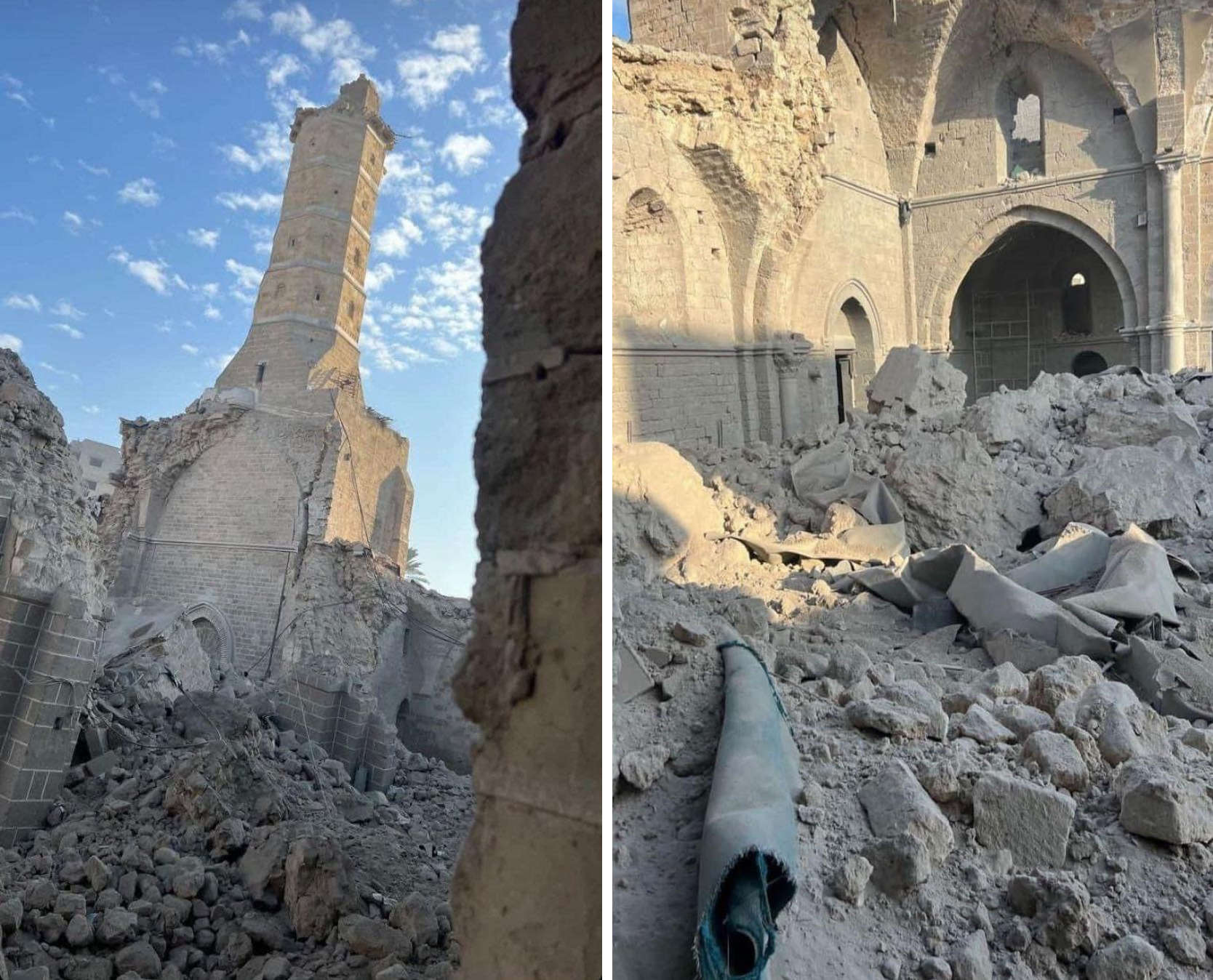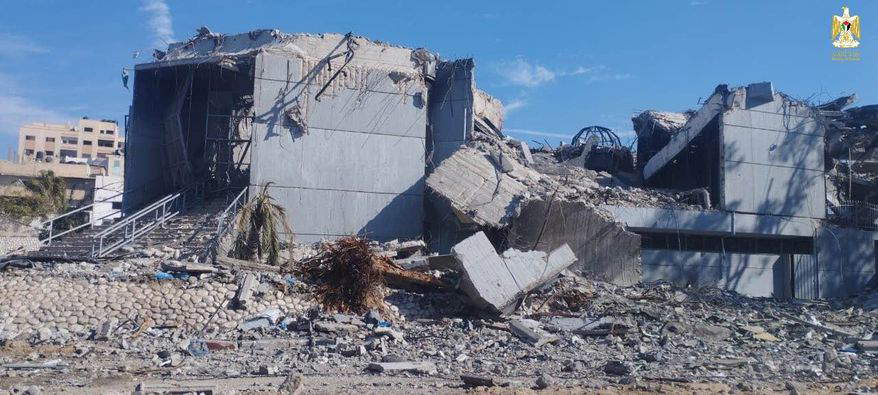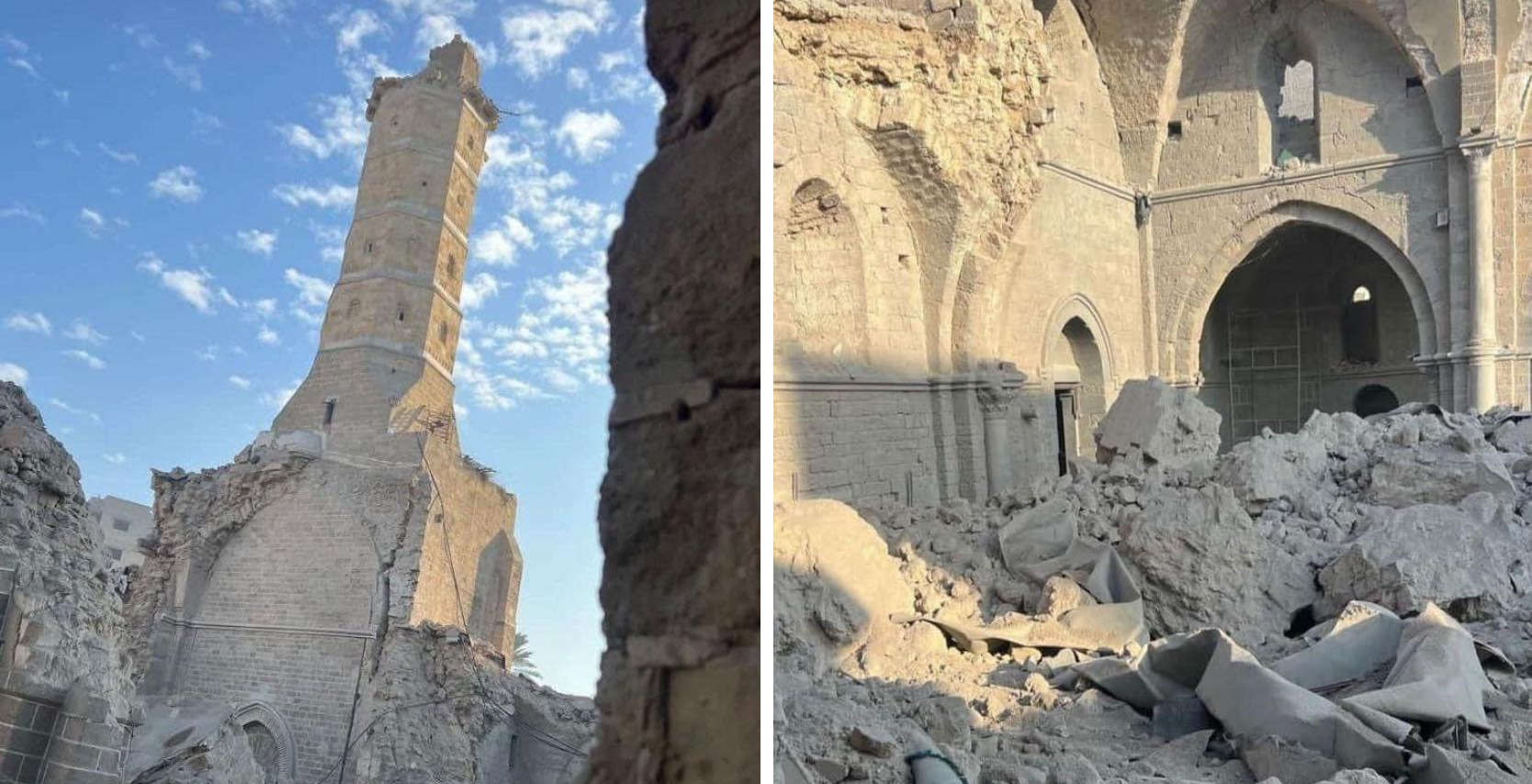What do we know so far about Gaza's cultural heritage during the Israel-Hamas war?
What is happening to Gaza ’s historical and artistic heritage during the war between Israel and Hamas? In addition to the drama of civilian casualties (the grim count has exceeded 20,000 dead, according to reports from the Gaza Ministry of Health: however, the figures, according to a report to Reuters news agency by the United Nations High Commissioner for Human Rights, may be underestimated), there is also that of the potential loss of the identity of this land which, having become the scene of a violent war since October 7, could see its monuments lost forever. At the moment, as the war still rages on, gathering information and verifying it is an exceedingly difficult task: of course, while thousands of people are dying in the fighting there is no time to devote to monuments, museums and archaeological sites, and the issue concerning culture can only appear marginal, perhaps even misplaced. Yet it seems clear that Israel, as journalist Moshe Gilad explained in the Israeli daily Haaretz, “whether through lack of choice, lack of attention, or perhaps even deliberately, is destroying ancient cultural treasures,” and “the impact of such destruction will occupy us for years to come.”
On the Palestinian side, the Hamas-run Gaza government media office spoke in a note released in the final hours of 2023 of more than 200 sites destroyed: the devastation would affect churches, mosques, schools, museums, monuments, and archaeological sites. Also according to the Gaza administration, several destructions would be deliberate. This is, however, information that does not go into more detail. However, there are already some lists of damaged or destroyed sites, referring mainly to the situation in early December: during the truce agreed upon between Israel and Hamas, which lasted from Nov. 24 to Dec. 1, some experts were able to do some reconnaissance to draw up the first lists of monuments affected by the war.
The most important of the monuments whose damage has also been confirmed by the Israeli side is the Great Mosque of Gaza, the main and largest house of worship in the entire Gaza Strip, built between the 13th and 14th centuries although later rebuilt several times (following wars and earthquakes), particularly after the bombings of World War I. The mosque, also known as the Great Omari Mosque, was almost completely destroyed back in October: images of the devastated mosque, verified by the international press (starting with the BBC), show a building in ruins, of which only the minaret was saved. Gaza’s Ministry of Antiquities accused Israel of deliberately bombing the ancient sites, and the Israeli Defense Forces (IDF) responded, as Haaretz reports, that the mosque was being used by Hamas as a base for terrorist activities (the Israeli army claims to have discovered a tunnel under the worship building).

Among the sites damaged first is St. Porphyry’s Church, an Orthodox church dating back to the 12th century (though extensively renovated from the 19th century), the oldest in Gaza and among the oldest in the area.The church, located in the Zaytun neighborhood in Gaza’s Old City, had already been damaged in 2014 and was hit by Israeli shelling last October.
A first list of damaged sites is that published Dec. 20 by the Palestine branch of ICOMOS, the International Council on Monuments and Sites: the body must note that “it is impossible to share a complete update,” since in the absence of a permanent cease-fire it is not possible to “conduct a valid damage assessment” and “protect what remains of Gaza’s ancient heritage.” ICOMOS Palestine then explicitly accuses Israel of conducting an occupation on Gaza soil as well as a “genocide against the Palestinian people.”
In addition to the Omari Grand Mosque, mentioned first in the ICOMOS Palestine Section’s list, eight other sites appear that have allegedly suffered damage: Gaza’s Old City Hall, located on the city’s main street, which is said to have been about 50 percent destroyed; the gardens of Al-Pasha Palace, i.e., Gaza’s museum (later, Palestine’s Ministry of Tourism released pictures of the devastated palace, along with a note condemning the destruction, deeming it “part of the occupation’s plan to erase and destroy Palestinian national heritage.”) the Othman bin Qashqar Mosque in Gaza’s Old City, which was reportedly completely destroyed; the Ibn Othman Mosque (it is not known what damage it sustained); the Holy Family Catholic Church, which was reportedly damaged; Al-Sayyid Hashem Mosque, which was reportedly destroyed by Israeli artillery; Al-Zawiya Market, also completely destroyed according to ICOMOS Palestine; the 14th-century Gold Market, which reportedly suffered extensive destruction.

A report by the Spanish NGO Heritage for Peace, on the other hand, counts 104 damaged sites, listing the names of 25 of them: among those that the organization says were completely destroyed were the 5th-century Byzantine church of Jabalia (which only reopened for visits after restoration in 2022), the Omari Mosque in Jabalia, the ancient port of Gaza, the Sheikh Shaaban Mosque, the Al-Zafar Dmari Mosque, and the Center for Ancient Manuscripts and Documents. According to the NGO, all these sites were reportedly subjected to direct bombardment.
Palestine’s Ministry of Culture also published a series of Facebook posts denouncing the destruction of the “Samaritan Bath” (Hamam al-Sammara), the only ancient hammam still active in Gaza, the Martyrs’ Mosque in Khan Yunis, the contemporary art gallery “The Meeting” (located in central Gaza, it is described as “an initiative by young artists in Gaza to establish a permanent visual arts gallery for education, training and culture”), and the damage to sites such as the Rashad al-Shawa Cultural Center (one of the city’s most important contemporary monuments: it was designed to be the seat of the Palestinian Parliament), the Gaza Central Library and Archives. There were also many smaller theaters and cultural centers that reportedly sustained serious damage.

At the moment, however, it is difficult to see straight, as confirmed by archaeologist Alon Arad, director of the NGO Emek Shaveh, interviewed by Moshe Gilad about the destructions: “Apparently there is a deliberate process,” he said, “but I cannot say where it came from. Will there be a computer presentation by some chief of staff saying ’These are Gaza’s cultural assets and if we destroy them we will damage the enemy’? Or will there be some young field commander who decides that some structure seems to him to be ’Hamas-related’ and so he destroys it? However, the spirit of the commander is clear to everyone: destroy Hamas and everything connected to Hamas. Beyond that, we move into the world of accidental damage, which results from ignorance. International heritage law prohibits the use of cultural sites as military infrastructure. It is forbidden to build military outposts on them, and on the other hand it is forbidden to deliberately damage them. It is clear to all of us that the moment a force is attacked from inside a mosque, the force returns fire. You don’t expect a young commander to say to his men, ’No, no, that’s a fifth-century building, even if they shoot at us we won’t destroy it.’ Yet international law refers to proportionality. If a few bullets were fired from inside a mosque we would not throw a one-ton bomb on the building. It is difficult for me to judge the decision-making process of the young soldiers in harm’s way, but the result is that there is now serious damage. It is clear to me that neither side is taking an approach that will help preserve the important historical sites.”
The archaeologist’s impression is that the IDF “is working with much more permissive considerations. We see widespread destruction in Gaza. Cultural heritage sites are no exception. It is clear to us that Hamas is using at least some of the sites, but the impression is that the historical sites in Gaza right now are completely abandoned because there is no one to take care of them, the concern is for food, fuel, water, and the attention that can be given to preserving a mosaic is nonexistent. There are several international groups that have been working in the Strip, but they cannot prevent its destruction. Even an organization like UNESCO has no mandate or strength, yet it should be noted that there are three sites on the Provisional World Heritage list: the ancient port of Gaza, Tell Umm Amer, and the coastal wetlands area of Wadi Gaza, which is a candidate as a natural heritage site.”
And speaking of UNESCO sites, a meeting of the UNESCO Committee for the Protection of Cultural Property in Cases of Armed Conflict was held last December 14, with the result that the archaeological site of Tell Umm Amer was granted “provisional enhanced protection.” Although it is not clear how it will be possible to protect the site from destruction. What appears certain is that Gaza is in danger of losing a considerable part of its history.
 |
| What do we know so far about Gaza's cultural heritage during the Israel-Hamas war? |
Warning: the translation into English of the original Italian article was created using automatic tools. We undertake to review all articles, but we do not guarantee the total absence of inaccuracies in the translation due to the program. You can find the original by clicking on the ITA button. If you find any mistake,please contact us.




























